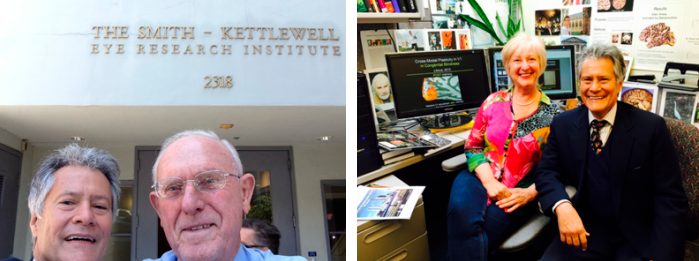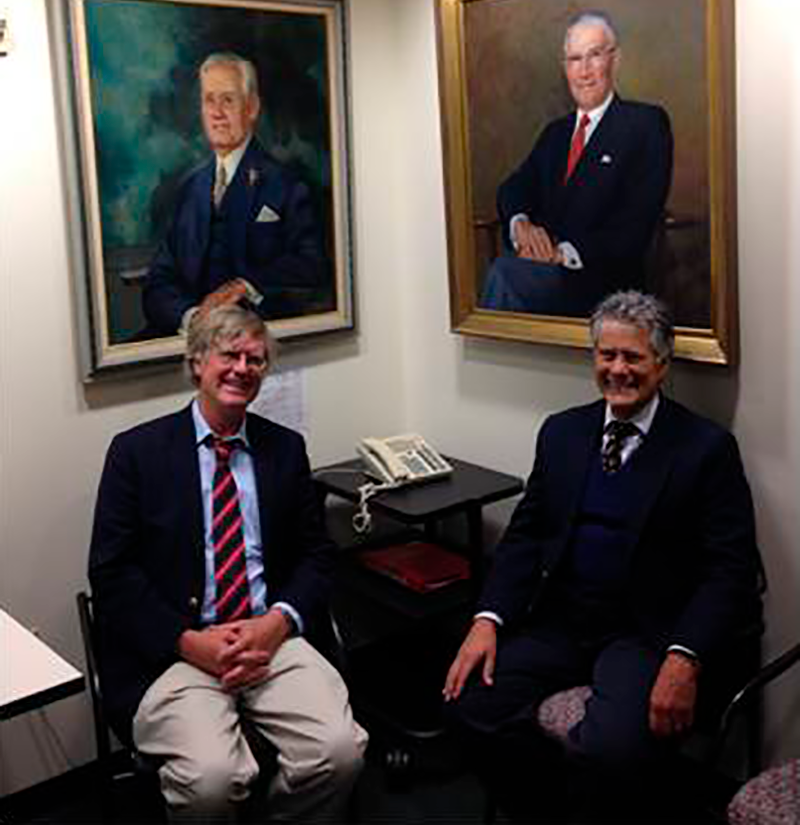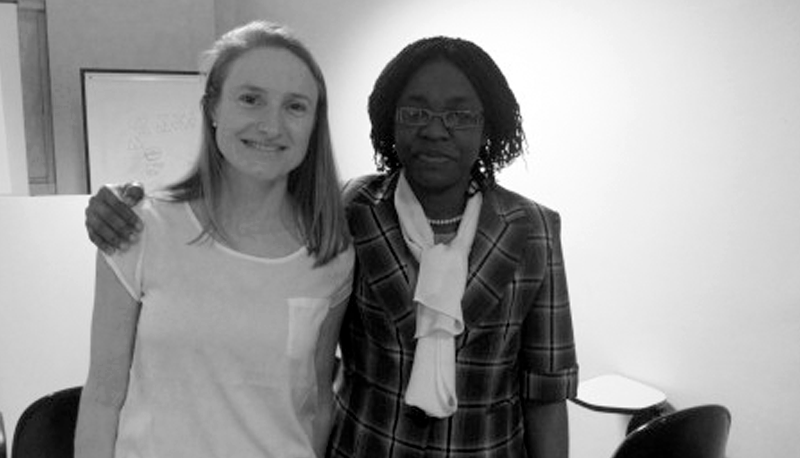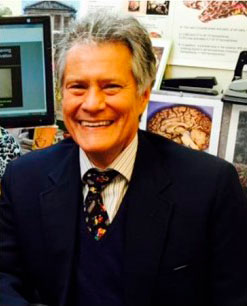In 2014, the Strabos Institute was a guest to the 21st International Symposium for Update on Ophthalmology at the Santa Casa de São Paulo.
Exchange Programs
21st International Symposium for Update on Ophthalmology at the Santa Casa de São Paulo
International Exchange Programs
Strabos Institute Exchange Program – Strabismus Research Foundation
My post-doc research is being carried out at the Strabismus Research Foundation (SRF) in San Francisco, in a collaboration with the Strabos Institute.

Here at the SRF I have had a chance to participate in studies of significant interest regarding new approaches to treat strabismus. My research projects are:
- Pharmacological treatment of strabismus in electrically silent muscles: injection guided by electric stimulus.
- Bupivacaine injection for strabismus treatment: clinical study with 5-year follow-up results.
The Strabos Institute and Dr. Mauro Goldchmit were critical to make this international connection happen..
Since the first few days here ate the SRF, I noticed that the environment was overflowing with science, creativity and inspiration. But only after a few months of interaction with my supervisors, Alan Scott and Joel Miller, I could realize something else: there can be no invention without tenacity.
“Inspiration leads to invention. Tenacity is the breeding ground for inspiration.” (Momofuku Ando, humanitarian and the inventor of instant noodles!)
I heard this quote at the SRF and this is how I see the Strabos Institute becoming true: from a dream, but with a lot of courage and persistence from its founder.
Iara Debert, M.D.
The arms of the Strabos Institute
The Strabos Institute – Research, Learning and Social Action –, though recent, it was created with open arms and opens doors to those who, in the Strabos spirit, are willing to study, innovate, teach and help in the fields of visual development and strabismus prevention/correction.
Dr. Mauro Goldchmit made the arrangements and I went to California, to San Francisco. Iara Debert, master’s and doctor’s at the Univeristy of São Paulo, welcomed me and was the first one to introduce me to that magic moment Dr. Mauro called, “The unthinkable world of basic science and high level complex research for our brain.” She works with Dr. Alan Scott in developing devices and creating techniques to drive balanced innervational stimuli into external ocular muscles, on a trinomial basis: creativity, workshop, and tests in rabbits with the goal of applying them to humans.

Iara Debert M.D.
Her work is wonderful and exciting, and it is expected that it will soon have an application on humans, creating tools for a new era of strabology.
At the “University of California San Francisco Ophthalmology Residents Day” programming included a presentation of 11 scientific studies conducted by the Residents and a Master Lecture by a Guest Professor from the National Eye Institute, at Bethesda, Dr. Wai T. Wong, Researcher and Head of the Neuroglia Interactions Unit for Retina Diseases.

If we take into consideration that Harvard University was founded in 1636, the first College in Brazil, the Salvador Medical College, was founded with the arrival of the Portuguese Royal Family in 1808, and the first University, in Parana, was founded in 1918, and that budgets for teaching and research in the United States are significantly larger than ours, it is no wonder that the level of works presented there have greater sophistication and technology than ours.
At the Smith-Kettelwell Eye Research Institute – SKERI – I was introduced as a friend of Dr. Mauro Goldchmit, who is respected and well-regarded by all. John Brabyn, researcher and executive director of the Institute, took me on a “lab tour.” In each of the small rooms of the Institute, there was a researcher working on a boundless universe of imagination and creativity. There, people breathed genius, hard work and passion, but there was one limitation: all works were necessarily aimed at the benefit of patients.

With Dr. Alan Scott and Dr. Lori Likova
Developing programs to help visually impaired people locate crosswalks by using smartphones, or tactile maps for large spaces such as subway stations, to functional magnetic resonance studies and new tests to evaluate visual functions, such as attention areas, glare sight, low- and high-contrast visual acuity, and studying follow-up movements with lasers, everything there nurtured within me a feeling of newness, even after 40 years on the job, using today the same visual tests I have used since the 70s, and I came back with a feeling that a new era in ophthalmology is approaching.

With Dr. John Brabyn
Jampolsky spoke at the 2013 CLADE about the “Peg leg Paradigm.” How can we assess the performance of a peg leg if we eliminate the good leg? We should test binocular sight to assess the function of the amblyopic eye, as the “Peg leg Paradigm” teaches us, he said, and those tests are under development.
Traveling teaches us, encourages us, offers us new perspectives, and above all, we return with seeds that will germinate here at home, and if Strabos is young, if it has long arms, it has fantastic masters and was born at a special time for Strabology, a new era of images, development and innovation.
Dr. José Mario Rocha de Andrade
Depoimento
M.D. Abiola Mould-Shalom is an ophthalmologist in Abuja, the capital of Nigeria. She was in Brazil for the last three months, visiting the Ophthalmopediatrics Department at Unifesp as an international intern. She also attended the Expert Training Course during the months of May and June 2015.
“It has been a worthwhile experience for me in Brazil (Unifesp) and also at the Strabos Institute. I have seen cases like Brown, bilateral Duane and others I had not previously seen in my practice.

Bruna de Andrade, M.D. and Abiola Mould-Shalom. M.D.
The tutorials at the Institute in addition to the clinical and surgical exposures I have had have given me confidence to start strabismus surgery when I return to Nigeria.
I hereby express my sincere appreciation to the Institute for receiving me as their guest.
Long live the Strabos Institute! Thank you!!!”
M.D. Abiola Mould-Shalom
National Hospital Abuja, Nigeria



